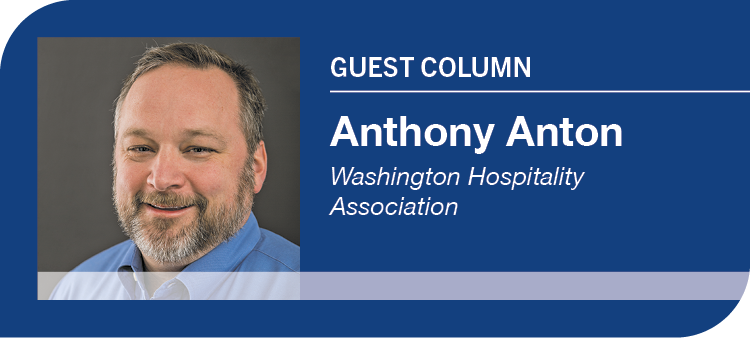
Home » Hospitality sector facing significant headwinds
Hospitality sector facing significant headwinds

March 11, 2022
As I write this, the state is preparing to roll back Covid-19 mandates: Masks are coming off, spring is in the air, and there’s a sense of a promise to return to (something like) normal.
The hospitality industry has been waiting for this moment for two years, and so have the customers we serve.
Hospitality businesses are where community happens: We gather with friends to share a meal in restaurants, we explore our state and find new favorite getaways with the help of hotels, and we raise a glass to celebrate at local pubs. All of these businesses are part of the cultural fabric of our communities. We’ve all been deprived of community in various ways throughout the pandemic, and now we’re ready to return.
As exciting as it is, the industry is facing significant headwinds – and they are often invisible to guests. You might wait 45 minutes for a table at a packed restaurant downtown on a Friday, then drive by on the following Tuesday and it will be closed permanently. Or your favorite hotel that you’ve been visiting for years might suddenly be up for sale.
How could that happen? Surviving a pandemic is a testament to the creativity and grit of every single hospitality business in the state. The average Washington restaurant has more than $160,000 in debt from the pandemic alone. Restaurants have such thin profit margins. This means it would take the average establishment more than three years without taking any income to recover those losses.
Local, state and federal relief programs certainly helped – but not everyone got the help they needed. More than half of the restaurants that applied for the federal Restaurant Relief Fund (RRF) did not get any money before the fund ran out. Our Washington congressional delegation has been trying to add funding to the program, but we don’t know what will happen yet. Thankfully, the 2022 Legislature included $100 million in “bridge” funding in its budget to help struggling restaurants cover their bills until RRF funding comes through.
Hotels suffered even more. To date, there has been no targeted federal relief for hotels. That means when hotels sat nearly empty for much of the pandemic, they continued to accrue debt without any assistance.
And then there’s the labor shortage. Nearly every industry has experienced a shortage of workers during the pandemic, and hospitality is no exception. This has meant many restaurants have had to cut hours, and hotels may have to reduce room availability – both things that cut further into their bottom line.
It’s stark news, but we are hopeful for a strong recovery. The health of the hospitality industry in Washington goes far beyond the importance of saving local businesses. For every dollar spent in hospitality, 96 cents goes directly back into the community to pay workers, purchase goods and pay utilities. This helps support even more local businesses and families. In fact, one of the best ways we can support our state’s recovery from the pandemic is to travel locally, dine out, and support our local hospitality businesses.
We’ve made it through the worst of the pandemic, hospitality businesses are still reeling from the last two years, and we have several years before we will likely be back to full health as an industry. But we can all help, and no huge sacrifice is required: Every time you dine at your favorite restaurant, stay at a local Washington hotel, or support your favorite local drinking establishment, you’re helping those businesses recover, and helping the rest of the state, too.
Anthony Anton is president and chief executive officer of the Washington Hospitality Association.
Hospitality & Meetings
KEYWORDS march 2022




